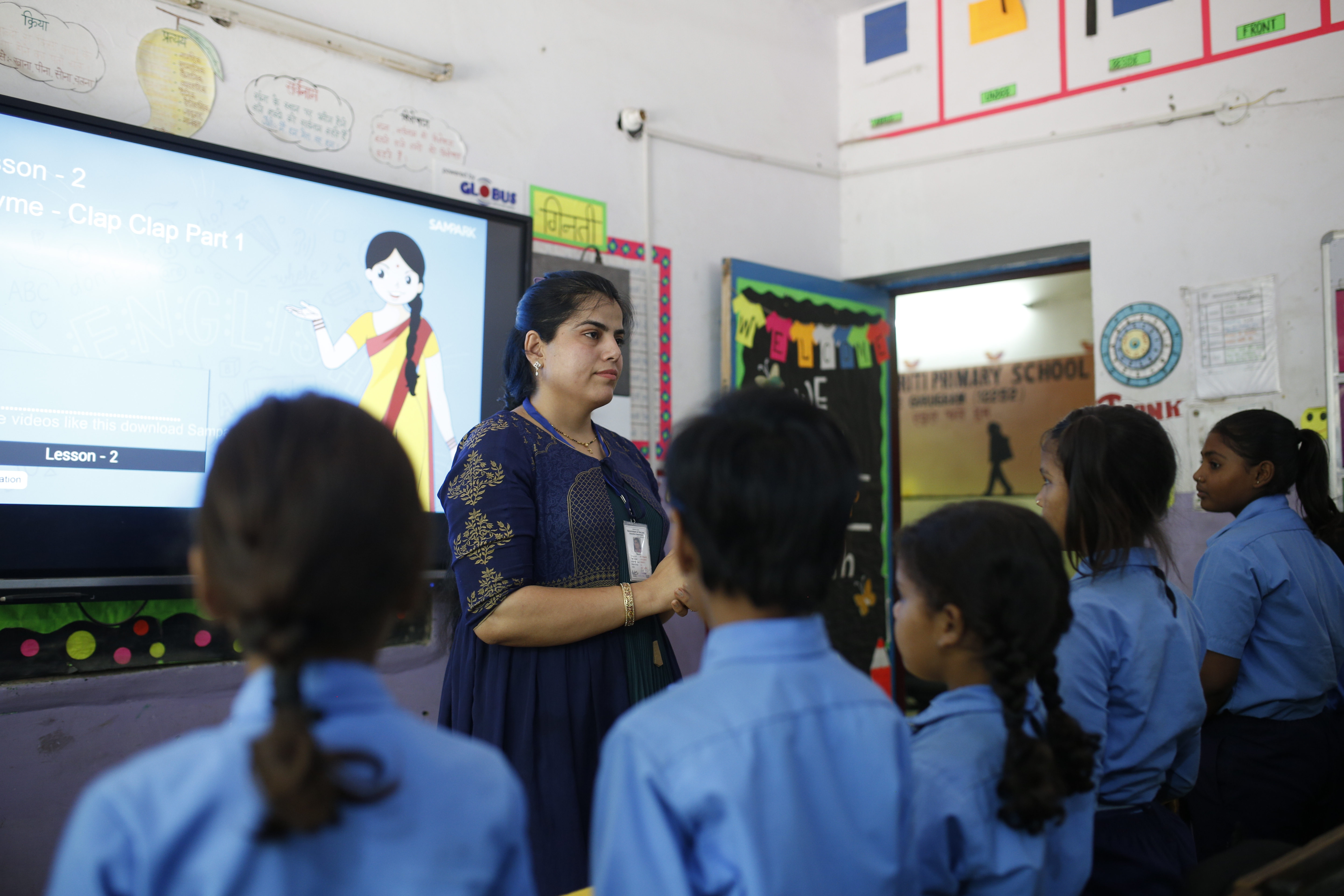Transforming Learning Outcomes in Schools

“Education is the most powerful weapon which you can use to change the world.” — Nelson Mandela
In schools with limited resources in India, the challenge extends beyond mere access to education; it encompasses the quality and effectiveness of learning. Many students struggle with basic reading and Maths, which hinders their academic progression and future opportunities. These issues can, in turn, lead to lower retention rates and decreased engagement. Addressing these issues requires innovative, engaging, cost-effective and scalable solutions tailored to the unique needs of these communities.
Major Challenges Faced by Schools with Limited Resources in India
Despite expansion in access to education, improving learning outcomes in schools with limited resources remains a significant challenge. Several key factors contribute to this issue:
Limited Access to Quality Teaching Resources
Many schools lack structured, curriculum-aligned teaching materials, making it difficult for educators to deliver engaging lessons.
Teacher Shortages and High Workload
In many rural schools, one teacher manages multiple grades with limited support, making it challenging to provide quality instruction and leading to student disengagement.
Low Student Engagement and High Dropout Rates
Traditional rote learning methods fail to capture students’ attention, leading to lower attendance and higher dropout rates.
Digital Divide and Infrastructure Gaps
Many schools still lack access to digital learning solutions and modern teaching aids.
Sampark Foundation: Innovations That Drive Impact
Sampark Foundation has pioneered solutions through its commitment to frugal innovation and a “Teachers First” approach. By developing cost-effective, technology-driven tools and providing comprehensive capacity-building of teachers, Sampark is working to enhance the educational experiences of millions of children.
One of the foundation’s initiatives is the Sampark Smartshala app, which offers teachers structured lesson plans, engaging multimedia content and gamified assessments aligned with state curricula. This programme has reached over 10 million children across more than 100,000 schools in eight states, leading to a 32% improvement in learning outcomes.
A real-life example of Sampark’s impact can be seen in its collaboration with the government of Chhattisgarh. By introducing the Sampark Smartshala programme in government primary schools, the foundation has significantly increased student engagement and learning levels. Teachers reported that the interactive content made lessons more accessible and enjoyable for students, fostering a more conducive learning environment.
Another initiative, Sampark Didi, is a preloaded audio device that simplifies learning English through storytelling and songs, making learning more relatable and less intimidating for first-generation learners. This tool has been instrumental in improving attendance and participation rates, as children find the learning process more enjoyable and less daunting.
The foundation’s emphasis on teacher empowerment is central to its strategy. By providing comprehensive training programmes, Sampark equips educators with the skills and confidence to integrate these digital tools effectively into their teaching practices. This approach not only enhances the quality of instruction but also reduces teachers’ workload, allowing them to focus more on individual student needs.
Measurable Impact in Schools with Limited Resources
The measurable outcomes of Sampark Foundation’s interventions are compelling:
- 16% increase in student attendance
- 30% reduction in teacher workload
- 32% improvement in academic performance, particularly in Math and Science.
These improvements highlight how low-cost, high-impact innovations can transform education for students in even the most under-resourced schools.
Scaling Change: The Road Ahead
While significant progress has been made, millions of children in schools with limited resources still lack access to quality education. To truly bridge the learning gap, we must:
- Expand digital infrastructure in under-resourced schools
- Train more teachers to integrate digital tools into learning
- Strengthen partnerships with state governments to scale successful models
With the right investments in scalable solutions, we can ensure every child, irrespective of their geographical location, receives a strong educational foundation.
Conclusion
With thoughtful innovation and a focus on empowering educators, it is possible to create meaningful impact in schools with limited resources. By transforming teaching methodologies and making learning engaging and effective, Sampark Foundation is working towards paving the way for a brighter future for millions of children. Together, we can achieve SDG-4 and make education more impactful and accessible for millions of children.
